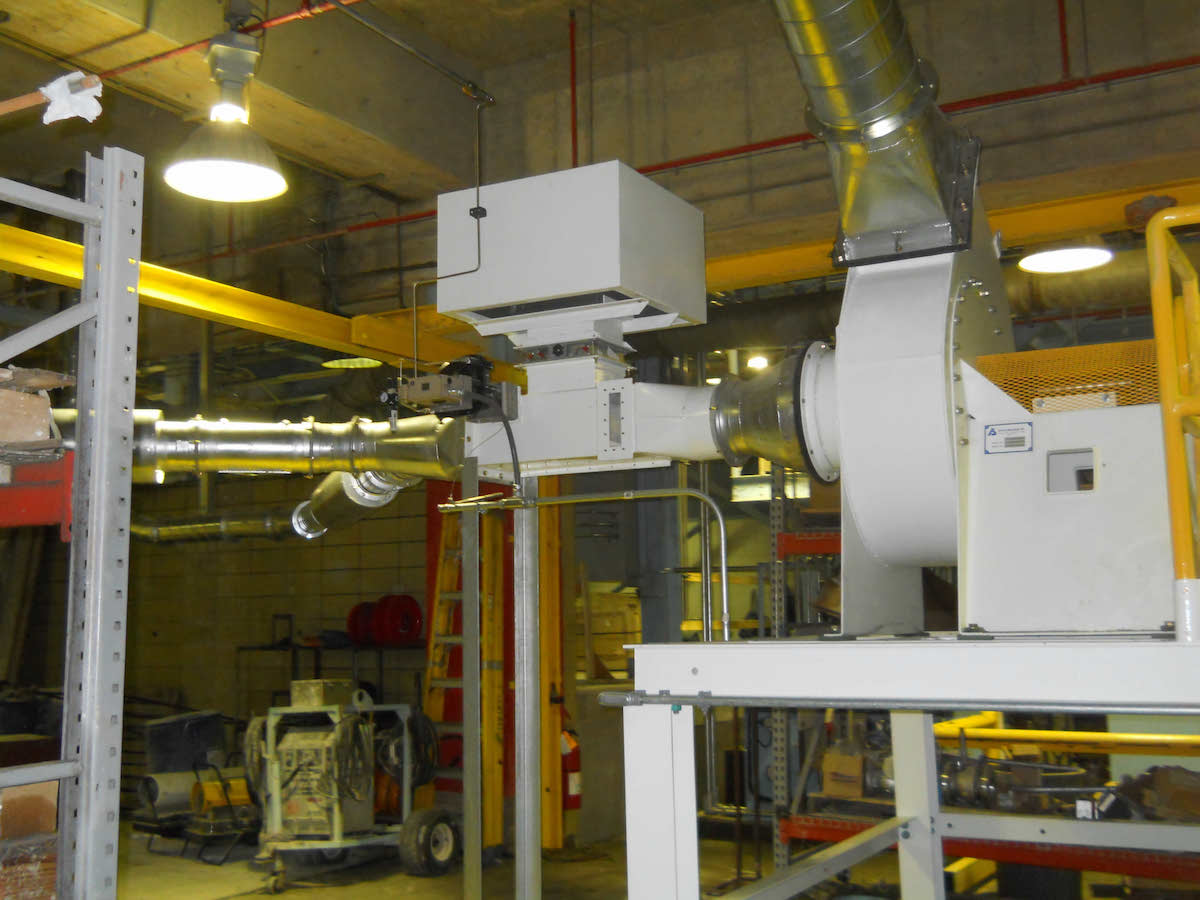Winders

WINDERS IN PNEUMATIC CONVEYING DESIGN
TYPICAL WINDER TRIM SYSTEM

This illustration shows that It utilizes a single fan system for capturing and pneumatic conveying purposes. Initially, the trim will be captured with hoods placed on each end of the roll, under the slitters, for collecting the edge trim. The trim ribbons will then be conveyed by way of two suction lines. These lines will run independently to the fan system at which point they will merge into a single line just prior to the fan inlet. This will prevent the continuous trim ribbons from roping prior to being cut by the fan wheel. Once the ribbons have been cut by the wheel, the trim will be conveyed to a separator system for either pulping or baling.
DUE TO THE FACT THAT THE WINDER HAS THE POTENTIAL OF RUNNING AT SUCH HIGH SPEEDS, IT WILL BE NECESSARY TO PROVIDE A MEANS OF REGULATING THE AMOUNT OF AIR BEING USED FOR CONVEYING PURPOSES.
This will be done with the use of an automatic velocity controller. It is placed in front of the fan system and uses an in-line blade for restricting the amount of air being pulled from the hoods at startup. The air not being pulled through the hoods will simply be bled into the system through the top of the velocity controller. At startup, the blade will be placed in the down position allowing for a limited amount of air to be pulled through the hoods. This will allow for the operator to easily thread the machine. As the winder speed increases, a 4 to 20 milliamp signal is sent from the winder to the velocity controller and the in-line blade is adjusted accordingly. When the winder reaches 50% of its maximum rpm, the blade will be in the full up position thus cutting off the bleed in and allowing for maximum suction at the hoods.
ONCE THE TRIM HAS BEEN CONVEYED TO THE SEPARATOR SYSTEM, THE DUST LADEN CONVEYING AIR WILL BE DIRECTED TO FILTER FOR CLEANING.
If conditioned air is being used and the trim is conveyed to a baler, it can be filtered in a dry type filter and returned back to the facility . Non conditioned air will be discharged into the atmosphere. If the trim is conveyed into a pulper, a push pull system can be furnished. This means that most of the air conveyed into the separator can be taken out with a wet scrubber or a dust handling fan, therefore, very little air goes into the pulper.
THIS TYPE OF WET FILTERING SYSTEM CAN BE USED TO EXTRACT THE DUST AND PUT IT BACK INTO THE PULPER VIA A WATER LINE.
If the dust does not need to be filtered, a dust handling fan can be used to exhaust the air from the separator and conveyed elsewhere.
TYPICAL WINDER PLANT ISO

WINDER PULPER ILLUSTRATION

